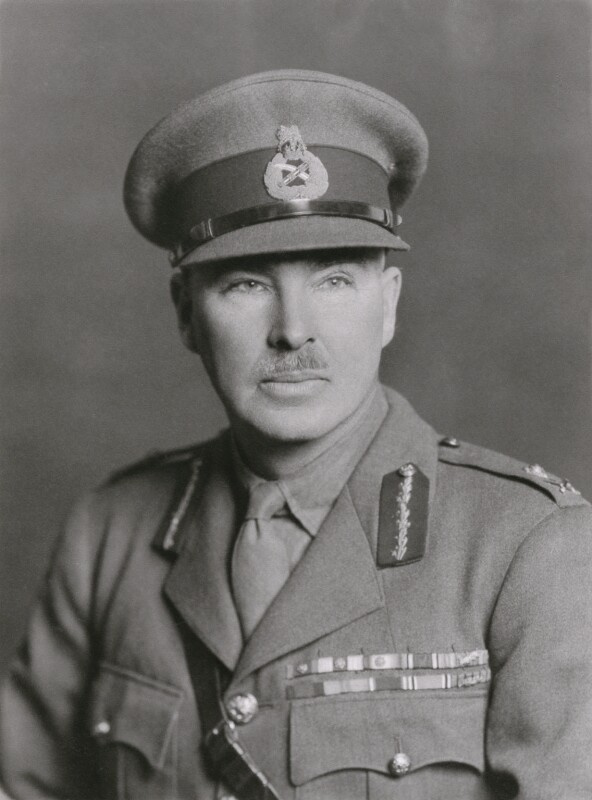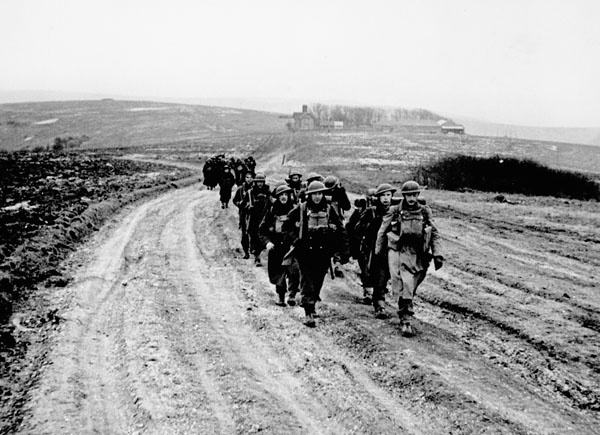Continuing the story of the Canadian Corps overseas.
Sources:
“Reader’s Digest: The Canadians at War: Volumes 1 & 2” ISBN-10 0888501617 (A compilation of articles ranging from personal stories to overviews of Canadian involvement in a particular campaign. Contains excerpts from a number of more obscure Canadian books written after the war, published 1969)
“The Half-Million: The Canadians in Britain 1939-1946”, written by C.P. Stacey and Barbara M. Wilson
After the debacle of the “2nd BEF” was completed and the Canadians were back in England, they (along with the other Allied forces in Britain) were faced with the grim reality that Britain could possibly be invaded by a foreign military for the first time in hundreds of years. While modern historians rightly doubt whether or not Germany was capable of actually going through with Operation Sea Lion, at the time there was a justifiable level of suspense. This was doubly so for the Canadian Corps. Whilst they had escaped the continent intact and with most of their equipment, they were one of the few units that had done so.
The only other unit considered able to go with the Canadians as part of the 2nd BEF, the aforementioned British 52nd Division, had returned with most of their men but little of their transport. The most capable purely British units were now the 3rd Division, which was only 4500 strong after their return from Dunkirk, and the 43rd which was rather ‘backward’ in its training and equipment. The Canadians were lucky. Only one of their brigades had lost its transport in France, and the other two were still fully stocked with fresh trucks from home. This made the 1st Canadian Division one of the very few formations that could be considered even remotely fit for the task of mobile counter-attack in a possible invasion. The Canadians were treated accordingly, and on June 23rd the force was reconstituted and moved to the vicinity of Oxford, a suitable position for a mobile reserve.
On the 25th McNaughton reviewed the situation in a conference at his HQ outside Oxford:
'The G.O.C. stated that we are a mobile reserve with a 360 degree front; and may have to operate anywhere in Great Britain from the South coast, to Scotland, or in Wales. We carry, together with the 4th Corps under Lieutenant-General Nosworthy, a serious responsibility. The Canadian Force and two tank battalions of the 4th Corps with some Light Armoured Units comprise the only mobile force immediately available in Great Britain. These will be reinforced shortly by the 43rd Division.

(Sir Francis Poitiers Nosworthy, commander of the British 4th Corps, the main force that would counter the Germans in the event of invasion)
As reorganization proceeded and new equipment began to come to hand, plans were changed. On the 26th of June McNaughton was told that it was now proposed to have two corps in mobile reserve, one under Nosworthy north of the Thames, and one under McNaughton himself south of the river. This latter would consist of the 1st Canadian Division, the 1st Armoured Division, reconstituted after having lost heavily in France, and the “New Zealand Force” of two infantry brigades and some artillery, which had only recently arrived. The Canadian government agreed to this new appointment for McNaughton, who was promoted to Lieutenant-General. The new ‘7th Corps’ came into existence on the 21st of July, with its HQ at Headley Court, near Leatherhead, Surrey. The Canadian brigade groups moved to Surrey in the course of July, and became acquainted with a pleasant county with which the Canadians were to be particularly associated.

(Canadian troops of a British Columbian regiment returning from a training exercise in England, April 1941.)
As the summer advanced, the threat of invasion gew, and planning and training were primarily designed to deal with it. Concentrations of barges appeared in the German-held ports across the Channel, and the RAF Bomber Command struck at them. In the phony-war days no bombs had fallen on Britain; but in August the German Luftwaffe began a systematic attack on British airfields and radar stations in an attempt to put the defending air forces out of action. The result was the Battle of Britain, a series of fierce air combats fought over the southern counties in the clear skies of the summer, In these conflicts the RAF Fighter Command may be said to have inflicted on Hitler his first defeat. The Canadian troops had front-row seats for this performance, and although as yet equipment shortages had prevented the organization of Canadian anti-air artillery units, at least three infantry and engineer units claimed to have shot down German aircraft with machine-gun fire.
A recollection of this time in England is written in Readers Digest: The Canadians at War. Ben Malkin was one of roughly 25,000 Canadians in Britain in mid-1940, here is what he remembers.
"…In my regiment, the 3rd Field, Royal Canadian Artillery, confusion was probably no more compounded than in any other unit of the 1st Division during the British Army’s retreat to Dunkirk, and after. To a soldier, the army is always confused, faceless, inscrutable, faintly comic. The phrase “situation normal, all fouled up,” expressed in the acronym “snafu,” is as militarily standard as the incomprehensible order, “dont just stand there, do something!”
We were domiciled on Salisbury Plain that May, completing our training, which meant firing a few rounds of live ammunition from our guns. Until then we had only pretended to fire them. Upon finishing our 10-day course, we were to proceed to France to engage the Wehrmacht, win the battle for freedom, then go home. Those were our orders. We arrived on Salisbury Plain three days after the German attack on the Low Countries started. By the time we had fired our guns, the Germans had overrun Holland and Belgium, and were driving the British to the sea. Our own travel plans were canceled after a 48-hour period during which a bemused general staff ordered us to France several times, only to cancel the order each time. About then, we began to lost the amateur standing of volunteers, citizen soldiers with trust in their leaders and their cause. The evident chaos was instilling in us a thoroughly professional attitude of amused cynicism, wholly resigned to our fate, clinging to each other for comfort and morale.
This attitude took sharper form as we engaged in the strange events of the next two months. Shortly after the Dunkirk evacuation we were mustered to Northampton, a manufacturing town on the edge of the Midlands. A motley assembly, we were armed with weapons that were mostly leftover from the Great War, and civilian trucks from home. Our regiment, and perhaps some others, drove through Northampton several times. There was speculation that we were trying to convince any spies in the area that there were three times as many of us as there actually were. But I have always believed the commanding general, in the lead, was trying to pretend we didn’t belong to him and was trying to lose us.
After a few days billeted with civilians, in whom we didn’t appear to inject either enthusiasm or confidence, we were taken to Blenheim Castle, about eight miles from Oxford. The whole 3rd Brigade (Royal 22nd, Carleton and York, and West Nova Scotia regiments, ourselves, engineers, and medicals) was bivouacked on the grounds and, for undisclosed reasons, a heavy guard posted at all gates. Many of us managed to get out anyway, some with passes, some without, for a visit to Oxford. We were bushed after several weeks on the road, and wanted only a little beer and a kindly word. But after being short-changed in fish-and-chips shops and pubs, and being told by the people of Oxford that we were a scruffy looking lot, we broke up the place. It was the closest thing to war any of us had seen.
We were at Blenheim only a few days when again to horse, for destinations unknown. The prevailing and most reliable rumour originated with the battery commander who said we were probably bound for the south of France, where we could make a landing virtually unopposed, then fight our way north. In the context of some of our other activities of the past month, this plan sounded reasonable. But we ended up in the middle of a wood, a common near Guildford, south of London, and were told our division was the entire mobile reserve of the British Army. We rolled on the ferns and laughed uncontrollably at this news. It was not long after that, in August, that the Germans began their daylight attacks on the nearby RAF fields. We had a view of much of the aerial fighting, as we spent most of our time on maneuvers in the region. The maneuvers were designed mainly to acquaint us with every road in the south of England, so that we of the mobile reserve could get to the invasion point as quickly as possible, or, as some joked, retreat as fast as possible. Since most of our time was spent sitting at the side of a road. waiting for trucks to move, we had no trouble watching the dogfights. They were exciting, but far off. It was hard to feel involved in them…" Ben Malkin, Reader’s Digest: The Canadians at War 1939-1945.

(A British Anti-Aircraft gunnery crew observes the contrails of aerial combat over England.)